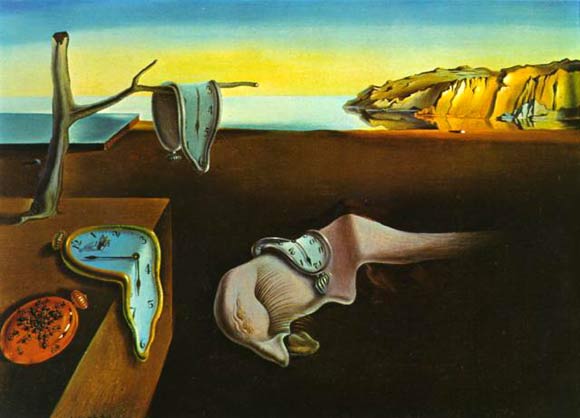 Thanks to my immeasurable fear of poetry (I’m a poet), I’ve read a lot of prose – both fiction and non – in the last year or two. (And believe me – I’m making no judgment on the difficulty of reading or writing either). Piling up the paragraphs over that time, I’ve developed for the first time in my serious reading life a handful of prose preferences. They are not genre or period related, but more or less determine whether I’ll go on reading a piece. One potential deal-breaker, beyond careless sentence-making or writers writing about writers, is the omniscient narrator. Perhaps jealously is at the root, but this idea of knowing everything is just perverse!
Thanks to my immeasurable fear of poetry (I’m a poet), I’ve read a lot of prose – both fiction and non – in the last year or two. (And believe me – I’m making no judgment on the difficulty of reading or writing either). Piling up the paragraphs over that time, I’ve developed for the first time in my serious reading life a handful of prose preferences. They are not genre or period related, but more or less determine whether I’ll go on reading a piece. One potential deal-breaker, beyond careless sentence-making or writers writing about writers, is the omniscient narrator. Perhaps jealously is at the root, but this idea of knowing everything is just perverse!
Often when a seer is telling me a story, patiently stirring that cauldron of latent symbols, I find him more prone to early, unnecessary or heavy-handed foreshadowing. The temptation is too large to place emphasis on minor events, to pause the story and thread an extra detail into a character or place. They may be small shovels, but they’re still smacking my face. It’s like hearing Bon Jovi’s voice come over a nice, warming rock riff – right away I’ve got a pretty good idea where this is headed.
Regular consumers of story – book, TV, film, barroom or otherwise – are trained to search for symbols and signposts, driven by the potential self-fellating glee of “figuring it out first.” So, unnatural emphasis always arrests the reader, drawing increased attention like a car crash under a full moon. Emphasis in everyday life comes when and where our minds and hearts apply it, without the guidance or intervention of a third party. The granular events of each day fall upon us organically, settling into piles in our minds as guided by our own passions, distastes, prejudices and hopes. Within that unrelenting cascade, we can find ourselves ascribing deep meaning to a minor event, only to have that depth truncated or in some way altered by future events. We make our own storytelling mistake. The grain has to change piles.
 Coming to understand people and places integrated in a story through eyes at a time – a single vision or set of views always complicated by emotion and by biased & unreliable memory – is what we experience in everyday life. When we as readers have no choice but to see characters exclusively through their words and actions, to develop and deepen our impressions of them, we go through an iterative rigor that mimics how we come to know the real folks we collide against. Some may find comfort in an omniscient narrator’s IV drip of information that stitches a story together, but to me it’s a prescription much less satisfying for the exact reason that we as readers lose the opportunity to do that work ourselves. What we’ve gleaned of human behavior through the rugged course of personal living matters less than how practiced we are at reading the cards in a narrator’s hand.
Coming to understand people and places integrated in a story through eyes at a time – a single vision or set of views always complicated by emotion and by biased & unreliable memory – is what we experience in everyday life. When we as readers have no choice but to see characters exclusively through their words and actions, to develop and deepen our impressions of them, we go through an iterative rigor that mimics how we come to know the real folks we collide against. Some may find comfort in an omniscient narrator’s IV drip of information that stitches a story together, but to me it’s a prescription much less satisfying for the exact reason that we as readers lose the opportunity to do that work ourselves. What we’ve gleaned of human behavior through the rugged course of personal living matters less than how practiced we are at reading the cards in a narrator’s hand.
One appeal could be control. The omniscient’s control allows us to implicitly and unquestionably trust what we’re told; the facts of people and place must be true as stated, and only an unexpected sequence of events can catch us off guard. [Hey, the cat just puked up a skeleton key!]. That control engenders comfort because, for just once, we’d like not to be caught off guard. In my own life, I’d love to control the sequence. To orchestrate the order in which my impulses and emotions deploy, or when shit happens so I can be prepared. If I could stipulate when I’d feel fun, intrigue, sex or horror (or all the above?!), that would beat the defeat of always reacting.
It’s probably because of Faulkner that I started to really see and feel differences in narration. He’s certainly on the far end of the spectrum, utilizing a myriad of voices, heavy dialect, stream of consciousness and nonlinear narration (unannounced flashbacks!) that jam the reader through at times paralyzing confusion. Most of us have enough confusion in our lives; I can certainly understand the desire not to grapple with it, too, when spending time to unwind and escape with a piece of literature. The difference to me is how powerful the experience of reading can be when it more closely meets that everyday I claim I’m trying to escape. What I’ve come to realize is that I read simply to try to understand my life and all its whys. I’m there in that story for comfort, for information, for insight. The confusion is not arresting, but familiar, and I want it so I can continue to turn the pages in search for a little more certainty I can use when I wake in the morning.





